Technologies
6 New Apple Products That Could Be Coming in 2023
The iPhone 15 and an AR/VR headset aren’t only new devices we expect in the coming months.
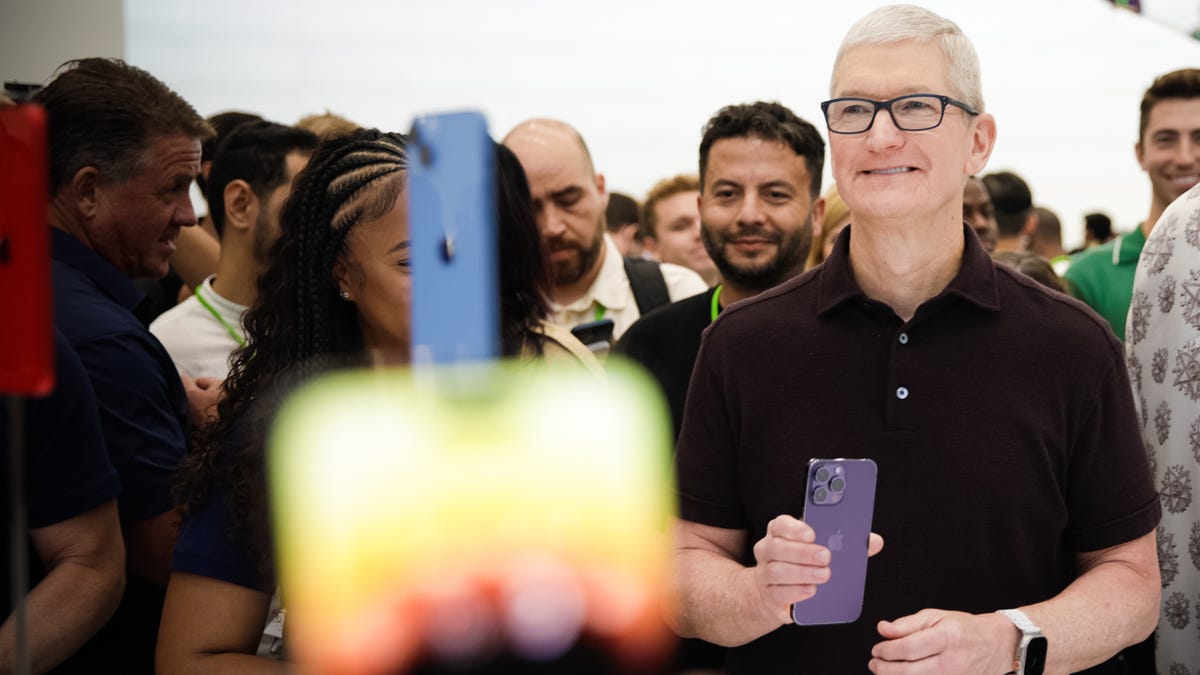
Apple never discusses new products before it’s ready to formally introduce them, making it impossible to know exactly what to expect. But certain products tend to arrive around the same time every year, providing possible clues. Leaks and rumors also paint a picture of potential gadgets we may see throughout 2023, such as the iPhone 15 and Apple’s long-rumored «mixed-reality» headset.
If the reports turn out to be accurate, 2023 could mark several firsts for Apple’s product lineup. We may see the company’s first AR/VR headset, the first iPhone with USB-C and the first 15-inch MacBook Air, for example. As for other products like AirPods, the Apple TV and the iPad, Bloomberg reports we likely won’t see major changes to those product lines this year.
The debut of a mixed-reality headset would signal an entirely new product category for Apple, while the other updates suggest Apple is further optimizing its devices to contend with Android and Windows competitors that offer bigger screens and universal USB-C charging.
Apple has already released several new products this year, including a new yellow version of the iPhone 14, an updated HomePod, a Mac Mini with the M2 and M2 Pro chips, and MacBook Pro computers with the new M2 Pro and M2 Max.
Here’s a look at what we’re expecting in 2023 based on Apple’s previous launches, rumors and leaks so far. Apple did not respond to a request for comment for this story.
iPhone 15 lineup
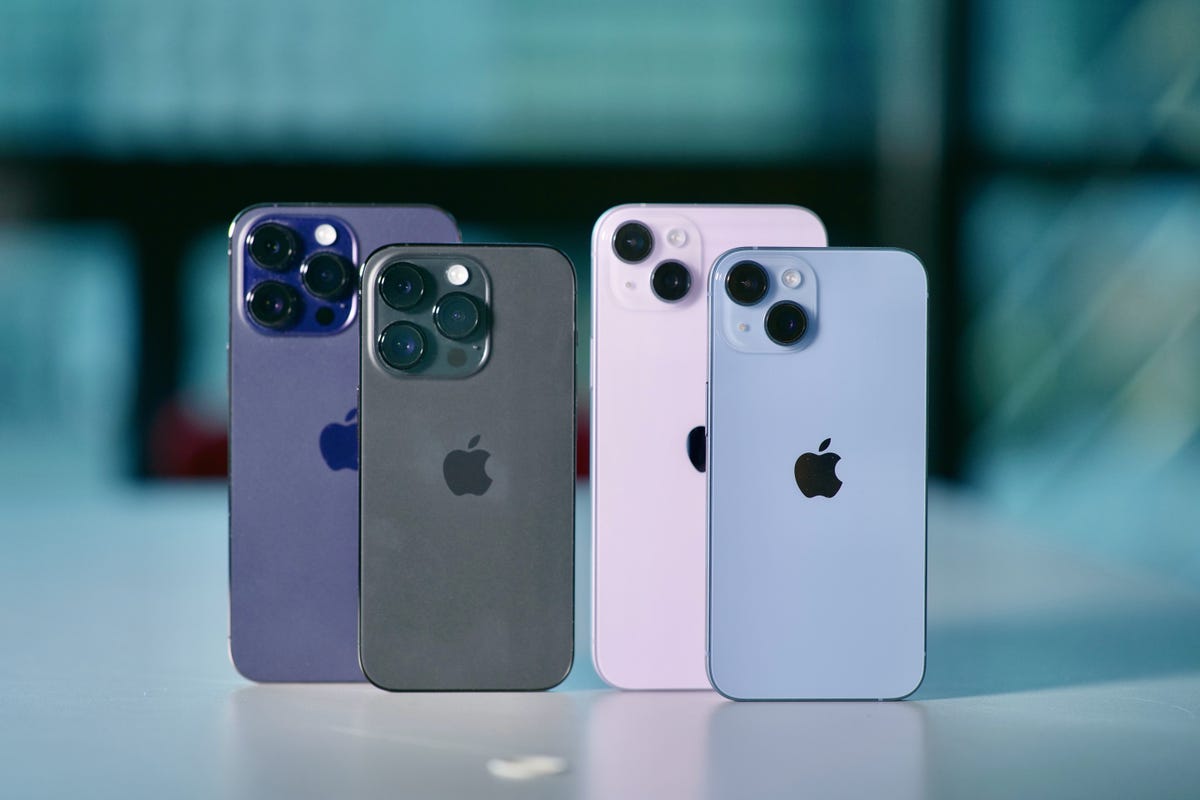

From left to right: the iPhone 14 Pro Max, iPhone 14 Pro, iPhone 14 Plus and iPhone 14.
Celso Bulgatti/CNETApple usually launches new iPhones in September, and this year will likely be no different. Among the most significant changes we’re expecting to see in the iPhone 15 is the switch from the Lightning charging port to USB-C. That’s because there are new rules requiring tech products sold in Europe to support USB-C by 2024. Still, it’s unclear whether Apple will fully embrace the transition to USB-C across the entire iPhone 15 lineup, or if it will make a region-specific model for Europe.
Another potential update could include the Dynamic Island’s arrival on standard non-Pro iPhone 15 models, Ross Young, CEO of Display Supply Chain Consultants, tweeted in September. At the same time, Apple could add more features to the iPhone 15 Pro that differentiate it from the base models. Such features could include a new periscope camera with better optical zoom for the iPhone 15 Pro Max and solid-state buttons for both Pro phones, according to TF International Securities analyst Ming-Chi Kuo.
Read more: I Want to See These 6 Features on the iPhone 15
Apple AR/VR headset


Apple is rumored to release a mixed-reality headset this year.
James Martin/CNETApple’s long-anticipated mixed-reality headset could finally make its debut in June, according to Bloomberg, marking Apple’s first major expansion into a new product category since the Apple Watch. The headset is expected to blend elements of augmented reality, which lays digital graphics over real-world environments similar to the smartphone game Pokemon Go, and virtual reality, which envelopes users in 360-degree graphics like the $400 Meta Quest 2.
But don’t expect Apple’s headset to come cheap. The device could cost $3,000 and will run on a new type of software that’s essentially a 3D version of the iPhone’s interface, Bloomberg reports. Expect it to be powered by Apple’s M2 chip, which can be found in its current MacBook lineup, the report says.
Tech giants from Meta to Sony to Microsoft have all tried their hand at virtual or augmented reality. But there’s an expectation that Apple’s first VR product could popularize the technology, since the company has a long track record of doing so with other products.
«I think Apple is going to be a big help to the market kind of like it has with, let’s face it, smartphones, tablets and smartwatches,» said Ramon Llamas, a research director at the International Data Corporation.
Apple Watch Series 9
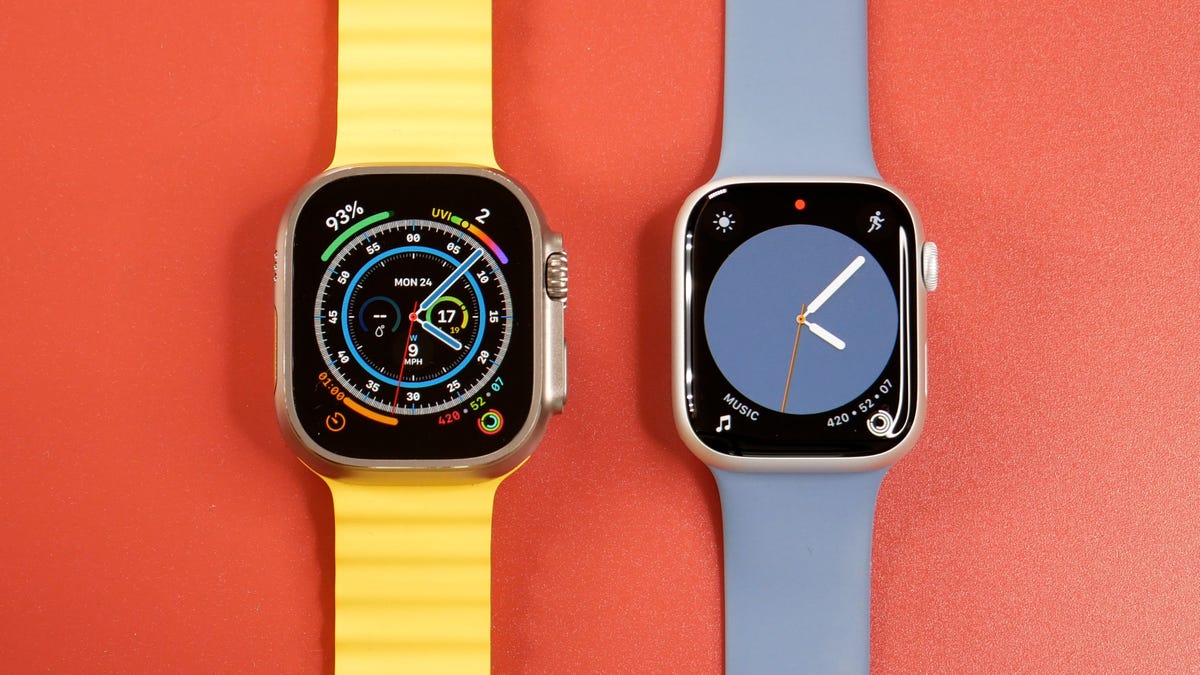

The Apple Watch Ultra (left) and Apple Watch Series 8 (right) both launched last year.
Lexy Savvides/CNETLike clockwork, Apple typically releases new Apple Watch models alongside its new iPhones in the fall. This year, however, we may see a more modest update than usual. Bloomberg reports that we shouldn’t expect to see significant changes to the Apple Watch this year. What that means is unclear, but it’s possible the watch could include routine updates like performance enhancements rather than significant new health-tracking features.
That falls in line with the pattern that Apple has followed in recent years. Other than the addition of temperature sensing and car-crash detection, the Apple Watch Series 8 is very similar to the Series 7. Apple has also introduced more new features through software updates rather than hardware changes in recent years, such as the ability to track sleep stages that arrived in WatchOS 9. But I’m hoping the Series 9 inherits some features from the Apple Watch Ultra, especially its handy Action button, which makes it easier to jump right into a workout.
There haven’t been many rumors or reports about whether to expect updated Apple Watch SE or Ultra models in 2023. But since Apple doesn’t always release special-edition products on an annual cadence, it wouldn’t be surprising to see Apple skip those updates this time around.
Read more: All the Apple Watch Series 9 Rumors We’ve Heard So Far
A new iMac


The 2021 iMac with Apple’s M1 chip.
Sarah Tew/CNETFans of Apple’s colorful all-in-one computer may have something to look forward to this year. The company’s next iMac is at an advanced development stage, meaning it could arrive in the second half of this year, according to Bloomberg. The refreshed computer will likely run on Apple’s rumored M3 processor, which would be a step up from the M2 chip powering the current MacBook Pro and MacBook Air. It’ll have a 24-inch screen like the 2021 edition and will be available in the same color options, but will have some internal design changes, according to the report.
Mac Pro with M2 Ultra
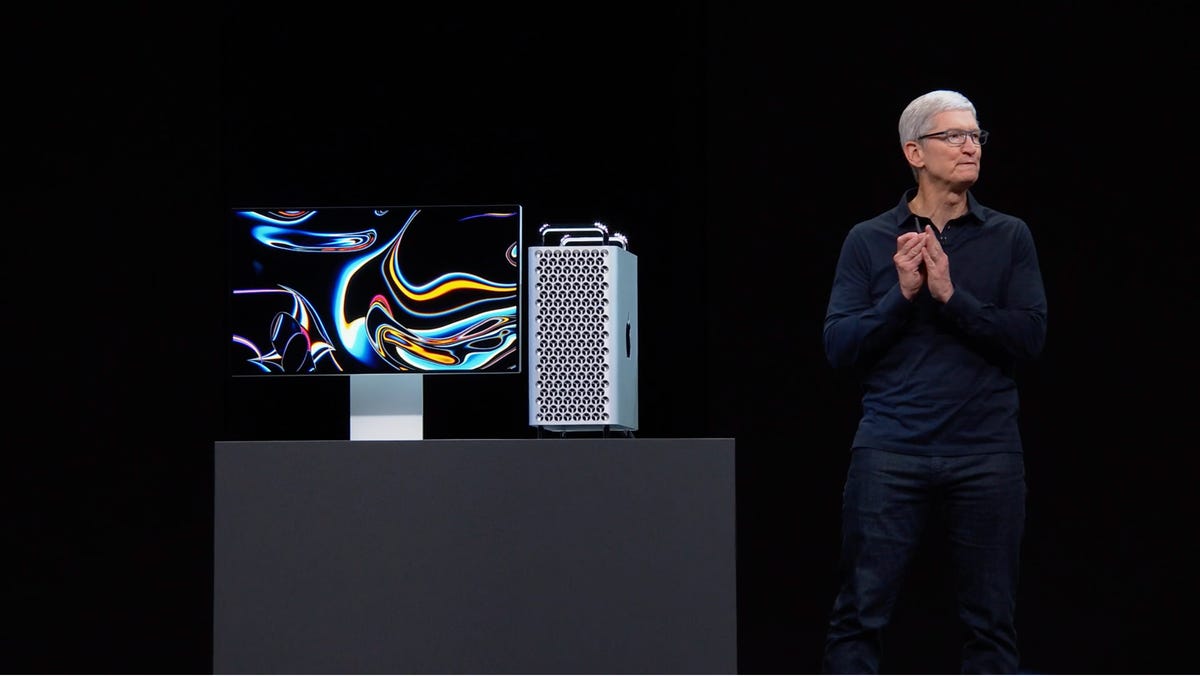

The 2019 Mac Pro on stage alongside Apple CEO Tim Cook.
Screenshot by Alexandra Able/CNETApple is also readying a new version of its top-of-the-line Mac Pro that would run on a chip called the M2 Ultra processor, likely a successor to the M1 Ultra, according to Bloomberg. That would mark a departure from the current model, which debuted in 2019 and runs on Intel’s Xeon processors. The chip will reportedly have 24 CPU cores, 76 graphics cores and 192GB of memory.
The $5,999 Mac Pro is Apple’s high-end desktop computer aimed at professionals. It’s the last remaining Mac in Apple’s current lineup that doesn’t include the company’s own silicon. The report suggests it will launch between late spring and summer, meaning we might see it at Apple’s Worldwide Developers Conference in June.
A 15-inch MacBook Air


The M2 MacBook Air.
Dan Ackerman/CNETApple’s lightweight laptop will reportedly be available in a 15-inch size for the first time this year. Bloomberg reports that a 15-inch MacBook Air is in Apple’s 2023 product roadmap, although it’s unclear whether this machine will run on the company’s expected M3 chip. A new 13-inch MacBook Air is also said to be in the works.
These two laptops are also expected to arrive in the late spring or summer, so we should be hearing about them in the coming months if Bloomberg’s report is accurate.
All told, the rumors, leaks and reports suggest 2023 could be a pivotal year for Apple’s computing lineup. If Apple does announce its first mixed-reality headset, we’ll get a glimpse at the company’s vision for the future of computing. Apple CEO Tim Cook has been vocal about the potential he sees for augmented reality, but we haven’t seen dedicated Apple hardware for providing those experiences yet. The arrival of Apple silicon in the Mac Pro would also mark the completion of Apple’s transition to its homegrown Mac chips within its current lineup.
Technologies
Today’s NYT Connections Hints, Answers and Help for Dec. 26, #929
Here are some hints and the answers for the NYT Connections puzzle for Dec. 26 #929
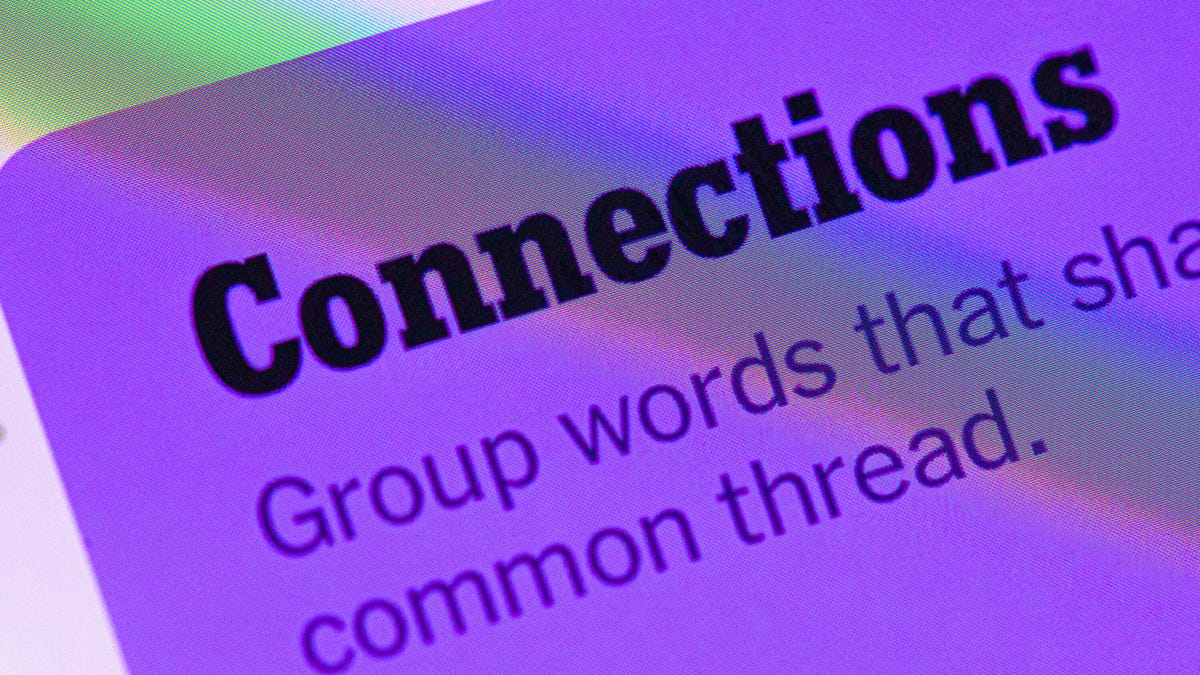
Looking for the most recent Connections answers? Click here for today’s Connections hints, as well as our daily answers and hints for The New York Times Mini Crossword, Wordle, Connections: Sports Edition and Strands puzzles.
Today’s NYT Connections puzzle is full of fun pop-culture references. Read on for clues and today’s Connections answers.
The Times has a Connections Bot, like the one for Wordle. Go there after you play to receive a numeric score and to have the program analyze your answers. Players who are registered with the Times Games section can now nerd out by following their progress, including the number of puzzles completed, win rate, number of times they nabbed a perfect score and their win streak.
Read more: Hints, Tips and Strategies to Help You Win at NYT Connections Every Time
Hints for today’s Connections groups
Here are four hints for the groupings in today’s Connections puzzle, ranked from the easiest yellow group to the tough (and sometimes bizarre) purple group.
Yellow group hint: Golden state cliches.
Green group hint: Funny films.
Blue group hint: Rock on.
Purple group hint: Not white.
Answers for today’s Connections groups
Yellow group: California-based character tropes.
Green group: Comedy subgenres.
Blue group: ’70s rock bands.
Purple group: Black ____.
Read more: Wordle Cheat Sheet: Here Are the Most Popular Letters Used in English Words
What are today’s Connections answers?
The yellow words in today’s Connections
The theme is California-based character tropes. The four answers are movie exec, surfer, tech bro and Valley Girl.
The green words in today’s Connections
The theme is comedy subgenres. The four answers are buddy, cringe, screwball and stoner.
The blue words in today’s Connections
The theme is ’70s rock bands. The four answers are America, Chicago, Foreigner and Journey.
The purple words in today’s Connections
The theme is black ____. The four answers are Forest, Friday, Panther and Widow.
Don’t miss any of our unbiased tech content and lab-based reviews. Add CNET as a preferred Google source.
Technologies
Today’s NYT Strands Hints, Answers and Help for Dec. 26 #663
Here are hints and answers for the NYT Strands puzzle for Dec. 26, No. 663.
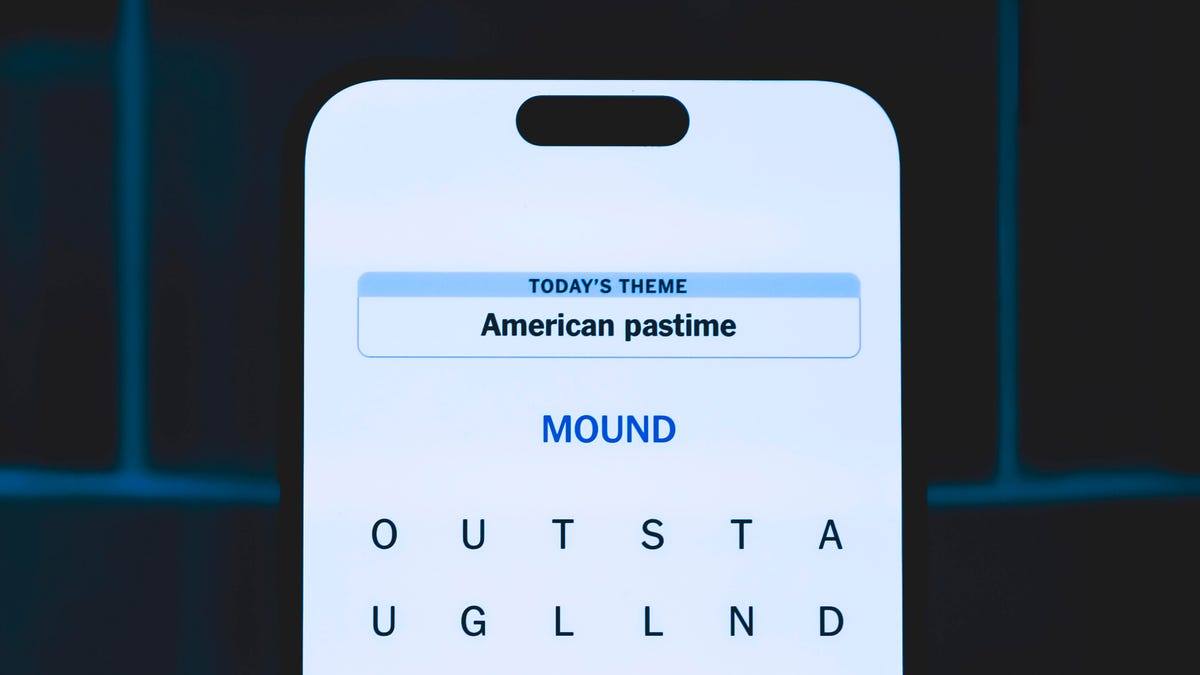
Looking for the most recent Strands answer? Click here for our daily Strands hints, as well as our daily answers and hints for The New York Times Mini Crossword, Wordle, Connections and Connections: Sports Edition puzzles.
Today’s NYT Strands puzzle is a fun one, but you might struggle at first to see a connection between the words. If you need hints and answers, read on.
I go into depth about the rules for Strands in this story.
If you’re looking for today’s Wordle, Connections and Mini Crossword answers, you can visit CNET’s NYT puzzle hints page.
Read more: NYT Connections Turns 1: These Are the 5 Toughest Puzzles So Far
Hint for today’s Strands puzzle
Today’s Strands theme is: Please hold.
If that doesn’t help you, here’s a clue: Cats love these more than they love expensive toys.
Clue words to unlock in-game hints
Your goal is to find hidden words that fit the puzzle’s theme. If you’re stuck, find any words you can. Every time you find three words of four letters or more, Strands will reveal one of the theme words. These are the words I used to get those hints, but any words of four or more letters that you find will work:
- BOXING, CHEAT, HEAT, SMOCK, MOCK, LATE, TEAM, MEAT, TEAMS, LOOT, TOLE, BALL, BALE, KALE, TALL
Answers for today’s Strands puzzle
These are the answers that tie into the theme. The goal of the puzzle is to find them all, including the spangram, a theme word that reaches from one side of the puzzle to the other. When you have all of them (I originally thought there were always eight but learned that the number can vary), every letter on the board will be used. Here are the nonspangram answers:
- GIFT, SHOE, TOOL, LUNCH, MATCH, PIZZA, BALLOT, TACKLE (All are words that can be placed in front of «box.»)
Today’s Strands spangram
Today’s Strands spangram is BOXINGDAY. To find it, start with the B that’s four letters down on the far-left row, and wind across and then down.
Don’t miss any of our unbiased tech content and lab-based reviews. Add CNET as a preferred Google source.
Technologies
Today’s Wordle Hints, Answer and Help for Dec. 25, #1650
Here are hints and the answer for today’s Wordle for Dec. 25, No. 1,650.

Looking for the most recent Wordle answer? Click here for today’s Wordle hints, as well as our daily answers and hints for The New York Times Mini Crossword, Connections, Connections: Sports Edition and Strands puzzles.
Today’s Wordle puzzle has some tough-to-guess letters. If you need a new starter word, check out our list of which letters show up the most in English words. If you need hints and the answer, read on.
Read more: New Study Reveals Wordle’s Top 10 Toughest Words of 2025
Today’s Wordle hints
Before we show you today’s Wordle answer, we’ll give you some hints. If you don’t want a spoiler, look away now.
Wordle hint No. 1: Repeats
Today’s Wordle answer has no repeated letters.
Wordle hint No. 2: Vowels
Today’s Wordle answer has one vowel.
Wordle hint No. 3: First letter
Today’s Wordle answer begins with P.
Wordle hint No. 4: Last letter
Today’s Wordle answer ends with M.
Wordle hint No. 5: Meaning
Today’s Wordle answer can refer to a geometric figure.
TODAY’S WORDLE ANSWER
Today’s Wordle answer is PRISM.
Yesterday’s Wordle answer
Yesterday’s Wordle answer, Dec. 24, No. 1649, was SPOOL.
Recent Wordle answers
Dec. 20, No. 1645: WHITE
Dec. 21, No. 1646: QUILT
Dec. 22, No. 1647: CONCH
Dec. 23, No. 1648: GLINT
Don’t miss any of our unbiased tech content and lab-based reviews. Add CNET as a preferred Google source.
What’s the best Wordle starting word?
Don’t be afraid to use our tip sheet ranking all the letters in the alphabet by frequency of uses. In short, you want starter words that lean heavy on E, A and R, and don’t contain Z, J and Q.
Some solid starter words to try:
ADIEU
TRAIN
CLOSE
STARE
NOISE
-

 Technologies3 года ago
Technologies3 года agoTech Companies Need to Be Held Accountable for Security, Experts Say
-

 Technologies3 года ago
Technologies3 года agoBest Handheld Game Console in 2023
-

 Technologies3 года ago
Technologies3 года agoTighten Up Your VR Game With the Best Head Straps for Quest 2
-

 Technologies4 года ago
Technologies4 года agoBlack Friday 2021: The best deals on TVs, headphones, kitchenware, and more
-

 Technologies4 года ago
Technologies4 года agoVerum, Wickr and Threema: next generation secured messengers
-

 Technologies4 года ago
Technologies4 года agoGoogle to require vaccinations as Silicon Valley rethinks return-to-office policies
-

 Technologies4 года ago
Technologies4 года agoOlivia Harlan Dekker for Verum Messenger
-

 Technologies4 года ago
Technologies4 года agoiPhone 13 event: How to watch Apple’s big announcement tomorrow
